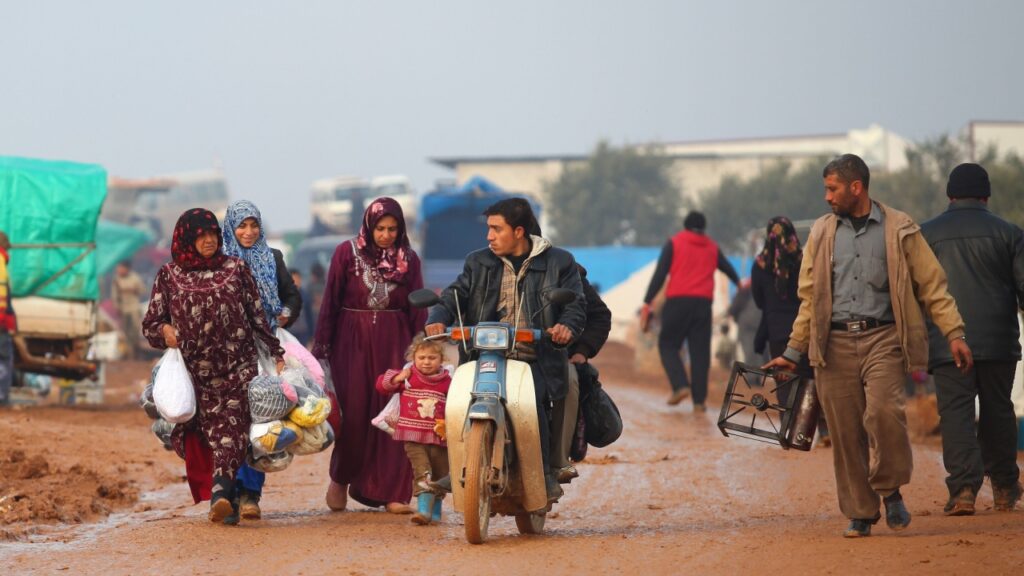
The issue of repatriating Syrian refugees has gained urgency as the country grapples with the aftermath of its prolonged conflict. Following the establishment of a transitional government led by Ahmed al-Sharaa, discussions surrounding the return of displaced citizens have intensified, particularly among European nations. With around 14 million Syrians displaced globally, including 6 million in neighboring countries and Europe, the international community is closely monitoring developments.
As various EU states consider suspending asylum claims and deporting Syrian refugees, the question remains: is Syria ready to safely receive its displaced population? While recent claims suggest improvements in governance under Hay’at Tahrir al-Sham (HTS), many challenges persist.
Assessing the Conditions for Return
Since the fall of the Assad regime, data from the United Nations High Commissioner for Refugees (UNHCR) indicates that approximately 500,000 Syrians have returned from neighboring countries. Despite HTS’s assurances, returnees face significant obstacles such as ongoing insecurity, sporadic violence, and devastated infrastructure. Economic instability further complicates reintegration efforts, with many in the Syrian diaspora expressing concerns about safety and political stability.
Although the intensity of armed conflict has decreased, Syria’s social and political landscape remains fragile. Premature repatriation could lead to renewed displacement if conditions do not stabilize. A comprehensive strategy, grounded in local realities and aimed at gradual return, is essential.
Addressing Sectarian Divides and Stability
Syria continues to grapple with deep-seated social divisions that threaten stability. Although there have been steps toward inclusivity, such as forming a cabinet that includes Kurdish and Christian representatives, targeted violence against minority communities persists. Recent incidents, including the bombing of Mar Elias Church in Damascus that resulted in 25 civilian deaths, underscore the ongoing risks faced by Christians and other minorities.
Returning refugees may find themselves in close proximity to former adversaries, potentially reigniting conflict over limited resources. Sustainable solutions require more than government gestures; they necessitate community-level reconciliation, guarantees of safety, and restoration of essential services.
International support remains crucial for Syria’s transition. Gulf states, including the UAE, Qatar, and Saudi Arabia, have begun providing aid, while the European Union has committed €2.5 billion for stabilization efforts. This funding must be strategically directed toward community-based peacebuilding and reintegration programs that address the unique challenges within Syria.
Local governance should be strengthened to ensure that Syrians lead the reconciliation process, with international support focused on minority rights and monitoring compliance with commitments from the transitional government.
The Healthcare and Landmine Crisis
Syria’s healthcare system remains in crisis due to years of conflict and economic sanctions. Many hospitals and clinics are understaffed and under-resourced, particularly in rural regions. The ongoing humanitarian emergency is compounded by a severe landmine crisis, which has resulted in over 1,000 casualties in recent months, with children constituting nearly one-third of the victims.
While Gulf and EU states can play a vital role in providing medical supplies and technical assistance, long-term recovery must prioritize training and retaining local medical personnel. Collaboration with organizations like the Syrian Arab Red Crescent is essential to build a resilient healthcare system that can support returning populations without over-reliance on external aid.
Securing Property Rights for Returnees
One of the most pressing challenges for returning refugees is the lack of secure property rights. Reports from the UN Syria Commission highlight systematic looting and destruction of property, primarily by former government forces. Laws enacted during the Assad regime, such as Legislative Decree No. 66 and Law No. 10, have further complicated property claims, disproportionately affecting displaced individuals who often lack proper documentation.
To facilitate safe returns, regional or national property claims committees, supported by international oversight, are necessary to address disputes and protect the rights of the displaced. A model similar to the Commission for Real Property Claims of Displaced Persons and Refugees in Bosnia and Herzegovina could be beneficial, providing a neutral mechanism for resolving property issues.
Establishing Preconditions for Safe Repatriation
The timeline for Syria’s readiness to welcome back its displaced population hinges on several interdependent conditions: demonstrable minority protections, a resilient healthcare system, clearance of explosive remnants, and enforceable property rights. A carefully coordinated repatriation plan is needed to prevent premature returns that could reignite conflict.
The European Union should develop a comprehensive repatriation strategy, linking any aid or sanctions relief to clear progress on established benchmarks. Establishing a civilian monitoring mission under UN auspices will enhance accountability and transparency throughout the return process.
As Syria navigates these complex challenges, the focus must remain on creating a safe and dignified environment for returning refugees, ensuring that their rights and well-being are prioritized. Only through careful planning and international cooperation can Syria begin to pave the way for lasting stability and a secure return for its displaced citizens.







